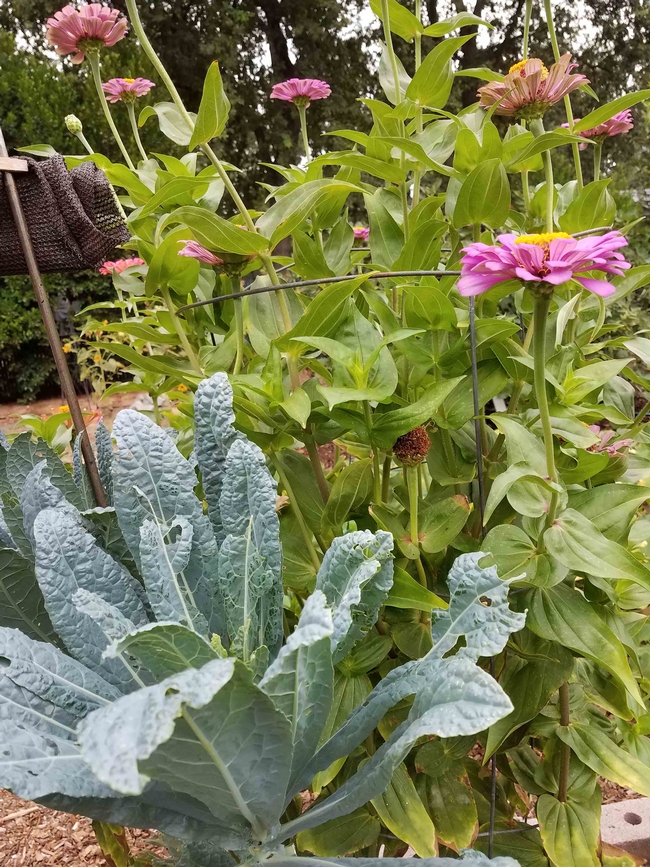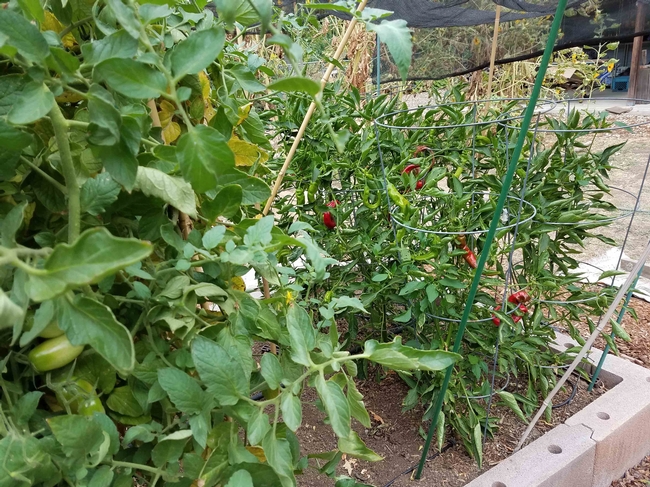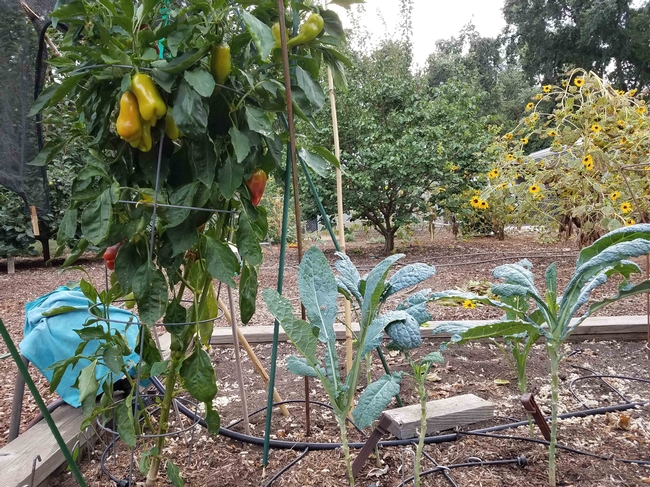Cool season plants like a warm start, so it's not too early to begin adding some of them to the vegetable garden now. In this way you can extend the harvest of both warm season crops and cool season veggies.

Many fall crops survive a bit of chill. The date to plant out frost-tolerant transplants like kale, chard, broccoli, Brussels sprouts, and cauliflower is somewhat flexible. Broccoli, Brussels sprouts, and cauliflower are best started indoors or purchased as transplants.
But what to do about all the plants already growing in the beds? This is where the magic begins. Previously it was believed by many that plants compete with one another for nutrients and water. The planting bed had to be denuded of the early crop and maybe even left fallow for a time before replanting in that space. Newer research shows that plants grow better when a variety of other plants grow nearby. Dr. Christina Jones, a soil ecologist from Australia who speaks at regenerative agriculture forums throughout the world says, “Every plant exudes its own unique blend of sugars, enzymes, phenols, amino acids, nucleic acids, auxins, gibberellins and other biological compounds….The greater the diversity of plants, the greater the diversity of microbes and the more robust the soil ecosystem.” These various soil microbes bring nutrients to the plant in exchange for sugars discharged by the roots. The wider array of available nutrients from a diverse group of plants increases an individual plant's ability to fight off diseases and pests, and increases the nutrient density of the plant. Basically, the plant grows better and is ultimately more nutritious when consumed. This diversity can be achieved by employing a combination of succession planting and “No Till” gardening techniques.

- A crop can be seeded in the place where another plant was harvested.
- The next crop can be planted among the existing crop (intercropping). This has advantages in August since foliage from older plants offer sun protection to tender seedlings.
- Several compatible plants can be planted together (companion planting).
- The same crop can be seeded at different time intervals for continuous, smaller harvests (successive plantings).
So there are a variety of ways in which new plantings can be mixed into existing beds, but what is the best way to do this? The old image of a row of chard separated from a row of broccoli by a clean path of dirt is giving way to a more heterogeneous look. Farmer pioneers and soil scientists like David Montgomery, Anne Bikle, Dr. Christine Jones, Dr. David Johnson, and Gabe Brown urge farmers and gardeners to get rid of the shovel or plow, mulch like crazy, plant multiple species, leave roots in the soil, and get some cows. The cows may not be feasible in your yard, but incorporating the other principles can enhance the health of your garden and bring more nutrients to your food.

To understand the advantages of No Till planting, imagine the roots of your existing plants creating a series of subterranean paths. These are channels which allow water to penetrate more deeply into the soil. They are the highways over which fungi, bacteria, and a world of other microbes travel. The casing of a root is covered with this life. In a vital, populated microbiome, it will take less time for roots of a new seedling to tap into this abundance than it would if it were being planted into a stripped environment. Digging and turning the soil also disrupts this preexisting helpful network.
Succession planting and starting cool season vegetables early will extend the harvest, but remember that it is hot and new plants dry out quickly. Water more frequently until your fall garden is established.
If you are interested in learning more about No Till gardening and building up soil health, the Master Gardeners are offering a three-part course, “Gardening from the Ground Up,” as part of their Fall Workshop series this September and October via Zoom. For details of this and the other Fall Workshops, visit our website.

First Frost Dates (PDF)
Vegetable Planting Guides for our area:
Vegetable Planting Guide Chico Valley Area
Vegetable Planting Guide for the Foothills
To view some of Dr. Christine Jones's talks on soil health, click here:
Gabe Brown, Dirt to Soil: One Family's Journey into Regenerative Agriculture, Chelsea Green Publishing, 2018.
The UC Master Gardeners of Butte County are part of the University of California Cooperative Extension (UCCE) system. To learn more about us and our upcoming events, and for help with gardening in our area, visit our website. If you have a gardening question or problem, email the Hotline at mgbutte@ucanr.edu (preferred) or call (530) 538-7201.